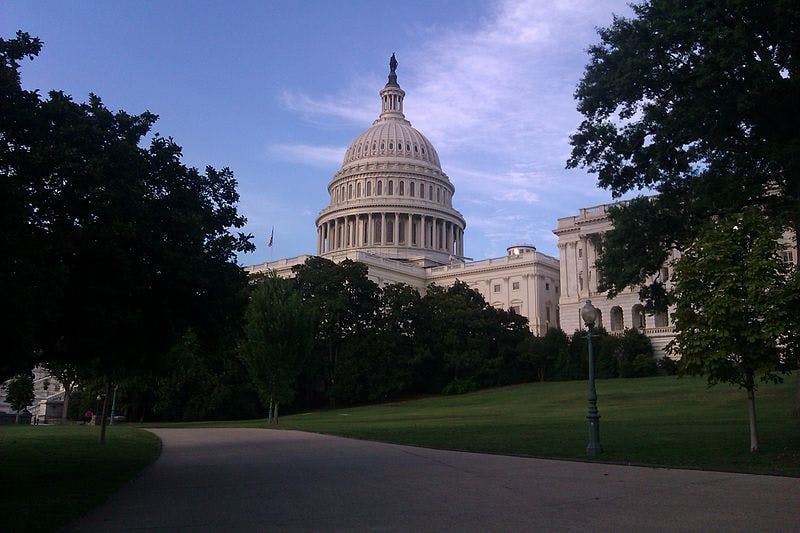How Liberals Stopped Worrying and Learned to Love Gerrymandering
Getting rid of gerrymandering, liberals claimed, was necessary to preserve democracy and prevent its overthrow by the forces of repression and one-party dictatorship.

Masks were necessary, especially in schools, to prevent mass deaths. Or so we were told, at great and tedious length — until suddenly, in the last 10 days, they weren’t.
The Democratic governors of Delaware, New Jersey, Connecticut and California followed the lead of the newly installed Republican governor of Virginia and revoked mask mandates. Or until, if I may say so, my Washington Examiner column last week titled “Returning to normalcy on school masks.”
Let’s pivot now to another subject on which liberal commentators were raising alarms. Getting rid of gerrymandering, they claimed, was necessary to preserve democracy and prevent its overthrow by the forces of repression and one-party dictatorship.
It turns out that those alarms are suddenly, to borrow a Watergate word, inoperative. The turning point may have come last week when the Cook Political Reports ace redistricting honcho, David Wasserman, tweeted that his state-by-state accounting that showed Democrats with a two- to three-seat gain in U.S. House redistricting in the cycle following the 2020 census.
So much for the lamentations, coming from Democrats such as Attorney General Holder, that Republican redistricting would guarantee one-party control for another decade or even, according to left-wing tweeters, forever. Republicans control legislatures and governorships in states with more House districts than Democrats. But they are failing to make the redistricting gains they did following the 2000 and 2010 censuses.
Why haven’t things been panning out that way?
One reason is that Democratic redistricters have been more ruthless than Republicans, starting with Illinois and its early filing deadline on March 14. Democrats drew “bacon-strip” districts heading 100 miles out from Chicago wards to the open prairie and downstate districts that stitch together small factory or university towns along highway rights of way. They increased Democrats’ edge from 13-5 to 14-3.
New York Democrats did even better. Their edge went from 19-8 to 22-4, thanks to a plan that linked conservative Staten Island with Brooklyn’s Park Slope and gave Representative Jerrold Nadler, the House judiciary committee chairman, a district that snakes from Upper Manhattan to Bensonhurst.
This seems in violation of New York law, but those familiar with how New York courts handle election law, such as Mr. Wasserman, have little doubt it will stand. Similarly, the Democratic-majority North Carolina Supreme Court has overturned a Republican redistricting plan based on the court’s 2019 criteria on an entirely inconsistent theory. “Heads I win, tails you lose.”
In contrast, the Republican-majority Ohio Supreme Court has overturned a partisan Republican map based on similar provisions. Texas Republican legislators concentrated on strengthening Republican incumbents rather than ousting Democrats.
You see similar inconsistency in interpreting the Voting Rights Act. Black politicians and Republican strategists long argued that it required maximizing the number of majority-Black districts, which resulted in electing more Black members and in strengthening Republicans in adjacent districts. Democrats taking that view prevailed in federal court in challenging Alabama’s districts, a decision stayed last week pending full review by the Supreme Court.
But in other cases, Democrats have argued that the act requires only a large percentage of Black voters, an arrangement that tends to elect more Democrats. It’s possible that the Supreme Court in the Alabama case may clear up the muddle of current Voting Rights Act jurisprudence that has been exploited by both parties.
The creation of purportedly nonpartisan redistricting commissions — a favorite proposal of those few liberals, like the Washington Post editorialists, who lament partisan redistricting — doesn’t end partisan gerrymanders. Democrats have succeeded in gaming supposedly neutral commissions this cycle in California (52 districts), Michigan (13) and New Jersey (12).
Those who have lamented that partisan redistricting means one-party control do have some historic precedent for their argument. As I documented in successive editions of “The Almanac of American Politics,” Democrats’ partisan redistricting helped them maintain majorities in the House of Representatives from the Supreme Court’s one-person, one-vote decision in 1964 through 1992.
That hasn’t worked for Republicans. Starting in 1995, neither party has maintained majorities over a 10-year intercensal period. Political realignments have frustrated even the most ruthless redistricters and may do so again.
The waning prominence of President Trump may turn some affluent districts who voted for President Biden in 2020 Republican again. Or the post-Biden emergence of someone like President Clinton in 1992 may turn some populist districts carried by Mr. Trump in 2020 once again Democratic. Or voters could start splitting their tickets again.
My prediction is that by 2030, masking of schoolchildren will be seen as a vestige of a remote and superstitious past, and that the partisan redistrictings of political parties and “apolitical” commissions alike will have been rendered nugatory by the voters.
Creators.com

